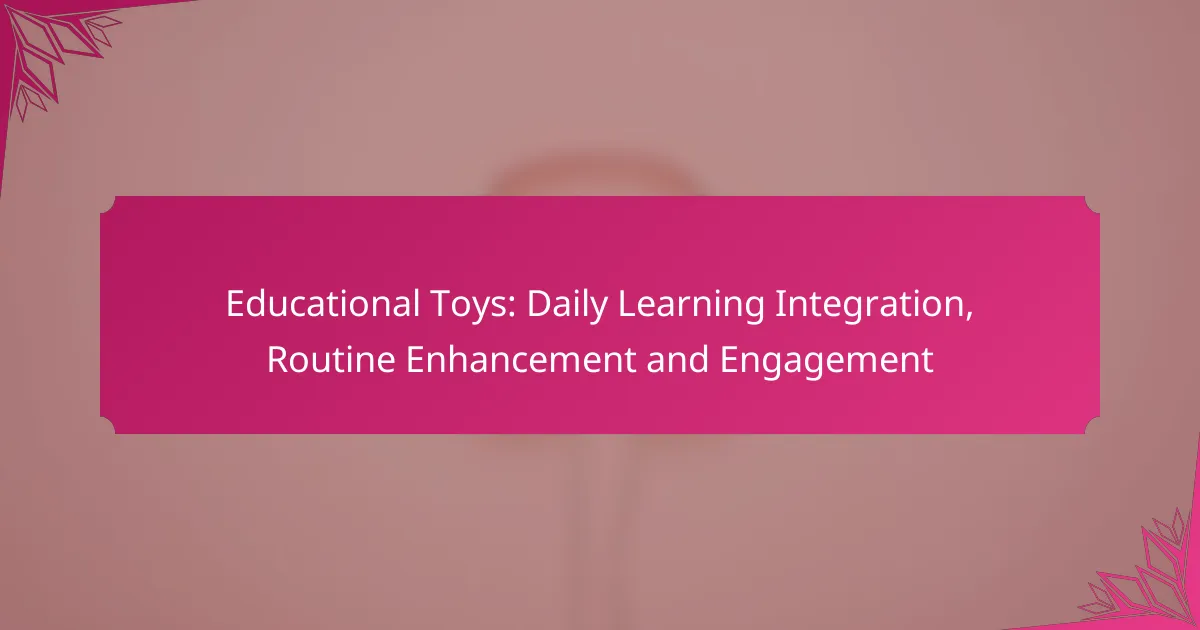Educational toys play a crucial role in enhancing daily learning by transforming the educational experience into an engaging and interactive journey. By incorporating structured play into a child’s routine, these toys not only promote curiosity but also seamlessly integrate learning into everyday activities, making the process enjoyable and effective.
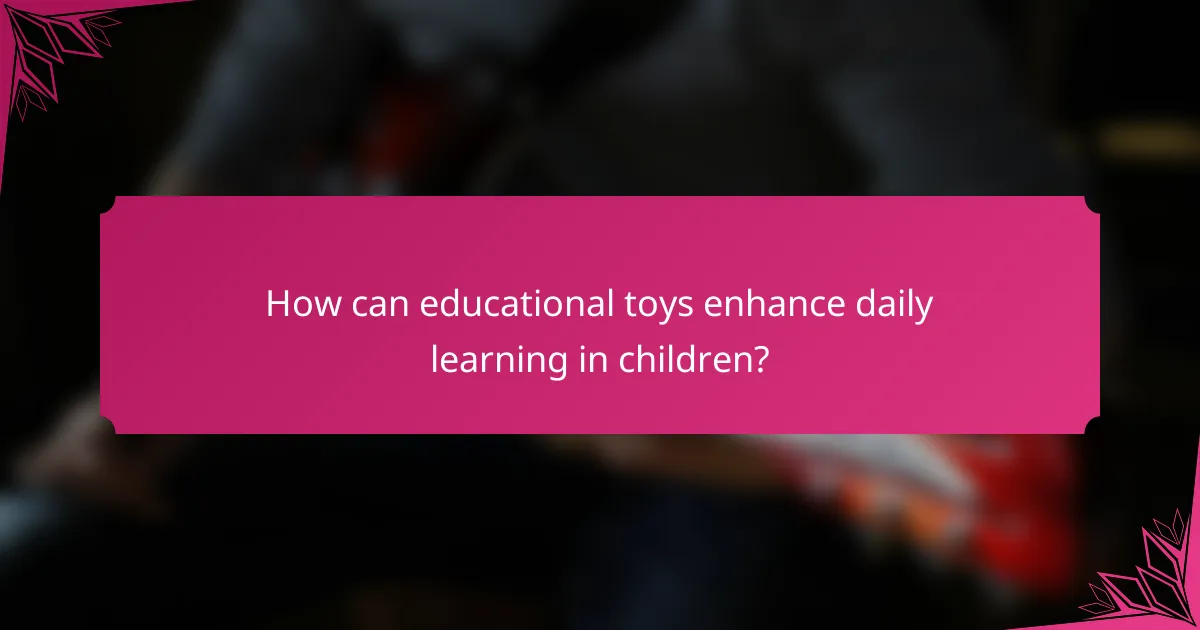
How can educational toys enhance daily learning in children?
Educational toys can significantly enhance daily learning by making the process engaging and interactive. These toys encourage children to explore concepts through play, fostering curiosity and a love for learning.
Interactive learning through play
Interactive learning through play allows children to absorb information in a fun and engaging manner. Toys that promote interaction, such as puzzles or building blocks, encourage kids to experiment and discover solutions independently. This hands-on approach can lead to better retention of knowledge.
For example, a toy that requires children to match shapes or colors can help them learn basic concepts while having fun. Look for toys that offer varying levels of complexity to keep children challenged as they grow.
Skill development via hands-on activities
Hands-on activities provided by educational toys are crucial for developing various skills in children. These toys often focus on fine motor skills, coordination, and cognitive abilities. Engaging in activities like stacking blocks or assembling models can enhance dexterity and spatial awareness.
Consider toys that align with your child’s age and developmental stage. For instance, younger children may benefit from larger blocks that are easier to manipulate, while older kids can tackle more intricate building sets that require critical thinking.
Encouraging creativity and problem-solving
Educational toys that encourage creativity and problem-solving stimulate a child’s imagination and critical thinking. Toys like art supplies or construction kits allow children to express themselves and explore different solutions to challenges they encounter during play.
To foster creativity, provide a variety of materials and encourage open-ended play. Avoid overly structured toys that limit imagination. Instead, opt for those that allow children to create their own designs or stories, enhancing their ability to think outside the box.
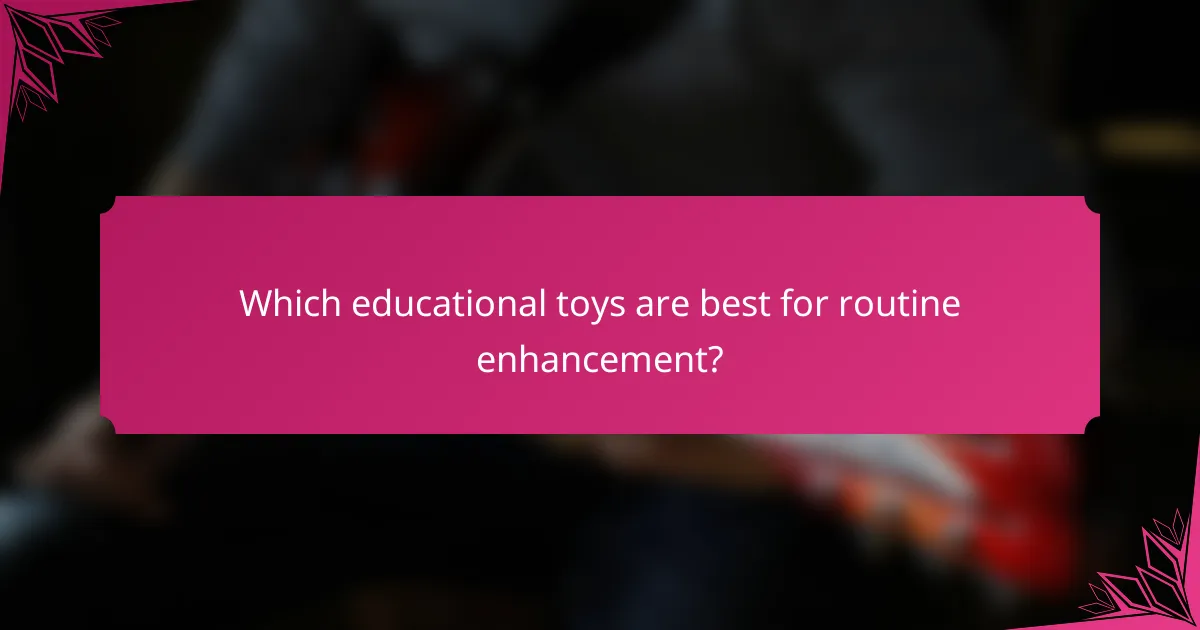
Which educational toys are best for routine enhancement?
Educational toys that enhance routine typically promote structured play while integrating learning. Look for toys that encourage daily engagement and can be seamlessly incorporated into a child’s schedule.
STEM toys for critical thinking
STEM toys are designed to develop critical thinking skills through hands-on activities in science, technology, engineering, and mathematics. Examples include building sets, coding games, and robotics kits that challenge children to solve problems and think analytically.
When selecting STEM toys, consider age-appropriateness and complexity. Toys that adapt to a child’s growing skills can provide ongoing engagement. Look for options that encourage experimentation and creativity, such as those that allow for multiple configurations or outcomes.
Art and craft kits for creativity
Art and craft kits foster creativity by providing materials and instructions for various projects. These kits can include items like painting supplies, modeling clay, or sewing materials, allowing children to express themselves artistically while developing fine motor skills.
Choose kits that align with your child’s interests and skill level. Kits that offer a variety of projects can keep children engaged over time. Encourage open-ended creativity by allowing children to modify or expand on the projects provided in the kits.
Board games for social skills
Board games are excellent tools for enhancing social skills, as they often require players to interact, cooperate, and communicate. Games that involve strategy, teamwork, or negotiation can help children learn important social cues and develop patience.
When selecting board games, consider the age range and the number of players. Games that are easy to learn but offer depth can keep children engaged longer. Look for games that encourage turn-taking and discussion to maximize social interaction.
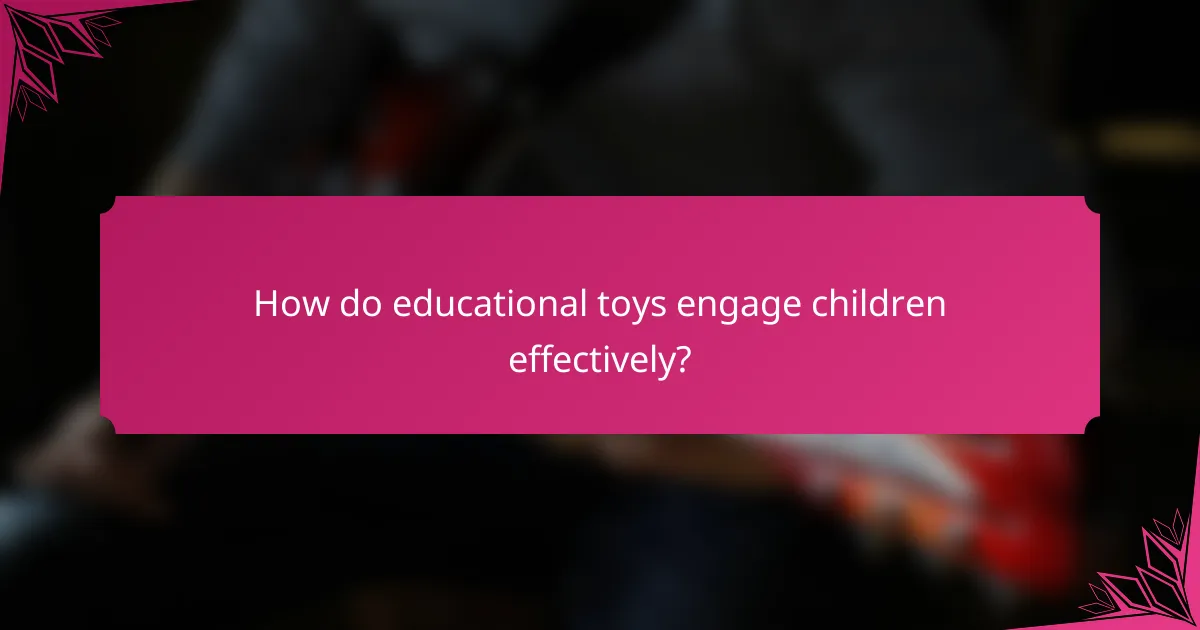
How do educational toys engage children effectively?
Educational toys engage children by stimulating their curiosity and encouraging active participation in learning. These toys often combine fun with educational value, making the learning process enjoyable and effective.
Incorporating technology in learning
Integrating technology into educational toys can enhance engagement by providing interactive experiences. For example, toys that use augmented reality or apps can create immersive learning environments that captivate children’s attention.
When selecting tech-based toys, consider age-appropriate features and ease of use. Look for devices that offer educational content without overwhelming young users, ensuring they remain focused and interested.
Age-appropriate challenges
Providing age-appropriate challenges is crucial for maintaining children’s interest in educational toys. Toys should be designed to match developmental stages, offering tasks that are neither too easy nor too difficult.
For instance, a toy that encourages problem-solving skills should adapt as the child grows, introducing more complex puzzles over time. This gradual increase in difficulty keeps children motivated and fosters a sense of achievement.
Multisensory experiences
Multisensory experiences engage children by stimulating multiple senses simultaneously, enhancing learning retention. Toys that incorporate visual, auditory, and tactile elements can create a richer educational experience.
Examples include building blocks with varied textures or musical instruments that encourage exploration through sound. Such toys not only make learning enjoyable but also cater to different learning styles, ensuring a broader appeal among children.

What criteria should parents consider when selecting educational toys?
Parents should prioritize safety, age appropriateness, and developmental benefits when choosing educational toys. These factors ensure that the toys are not only engaging but also contribute positively to a child’s growth and learning.
Safety standards and materials
When selecting educational toys, safety standards are paramount. Look for toys that meet recognized safety regulations, such as ASTM or EN71, which indicate they have been tested for harmful substances and choking hazards.
Materials used in toys should be non-toxic and durable. For instance, wooden toys should be free from harmful chemicals, while plastic toys should be BPA-free. Always check labels for certifications to ensure the toys are safe for your child.
Age suitability and developmental benefits
Choosing toys that align with your child’s age is crucial for maximizing their developmental benefits. Toys should challenge children appropriately without causing frustration. For example, a toy designed for toddlers may focus on basic motor skills, while those for preschoolers might introduce problem-solving and social skills.
Consider the developmental milestones your child is reaching. Look for toys that promote skills such as fine motor development, cognitive skills, and creativity. A good rule of thumb is to select toys that offer a range of activities to grow with your child, ensuring they remain engaging over time.

How do educational toys support learning in major cities?
Educational toys enhance learning in major cities by providing interactive experiences that stimulate cognitive development and creativity. These toys often incorporate local educational standards and resources, making them relevant and effective for children in urban environments.
Access to local educational resources
In major cities, educational toys often align with local curricula and educational resources, making them valuable tools for learning. For instance, toys that incorporate language skills may reflect the diverse linguistic backgrounds of urban populations, helping children learn in a context that resonates with their daily lives.
Parents can find educational toys in local stores or online platforms that focus on regional educational needs. This accessibility ensures that children can engage with materials that support their learning objectives effectively.
Community engagement through workshops
Workshops in urban areas often utilize educational toys to foster community engagement and collaborative learning. These events allow children and parents to explore new toys together, enhancing social skills and teamwork while learning through play.
Participating in local workshops can provide families with hands-on experience and insights into how to integrate educational toys into daily routines. Many community centers and libraries offer free or low-cost workshops, making them accessible for families across different income levels.
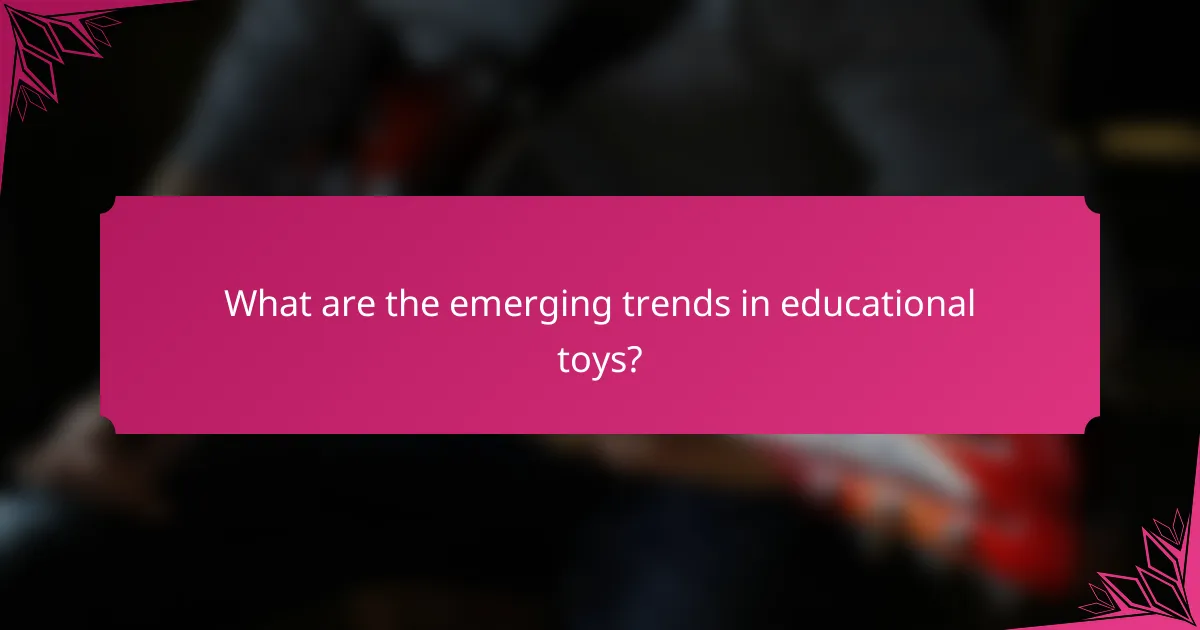
What are the emerging trends in educational toys?
Emerging trends in educational toys focus on enhancing learning through innovative features, sustainability, and personalized experiences. These trends aim to engage children more effectively while promoting environmental responsibility and adapting to individual learning needs.
Focus on sustainability and eco-friendliness
Many educational toys are now made from sustainable materials, such as bamboo, recycled plastics, and organic fabrics. This shift not only reduces environmental impact but also teaches children the importance of eco-friendly practices from a young age.
When selecting sustainable toys, look for certifications like FSC (Forest Stewardship Council) or non-toxic labels. These indicators help ensure that the products are safe for children and produced responsibly.
Integration of augmented reality features
Augmented reality (AR) is increasingly being incorporated into educational toys, allowing children to interact with digital elements overlaid on the physical world. This technology can enhance storytelling, science experiments, and even language learning by providing immersive experiences.
For instance, AR-enabled books can bring illustrations to life, making reading more engaging. When choosing AR toys, ensure they are compatible with common devices like tablets or smartphones to maximize accessibility.
Personalized learning experiences
Personalized learning experiences in educational toys adapt to individual children’s needs, helping them progress at their own pace. This can be achieved through smart technology that tracks a child’s performance and adjusts challenges accordingly.
Look for toys that offer customizable settings or feedback mechanisms, which can help maintain a child’s interest and motivation. Examples include interactive games that change difficulty based on the player’s skill level, ensuring a tailored learning journey.
